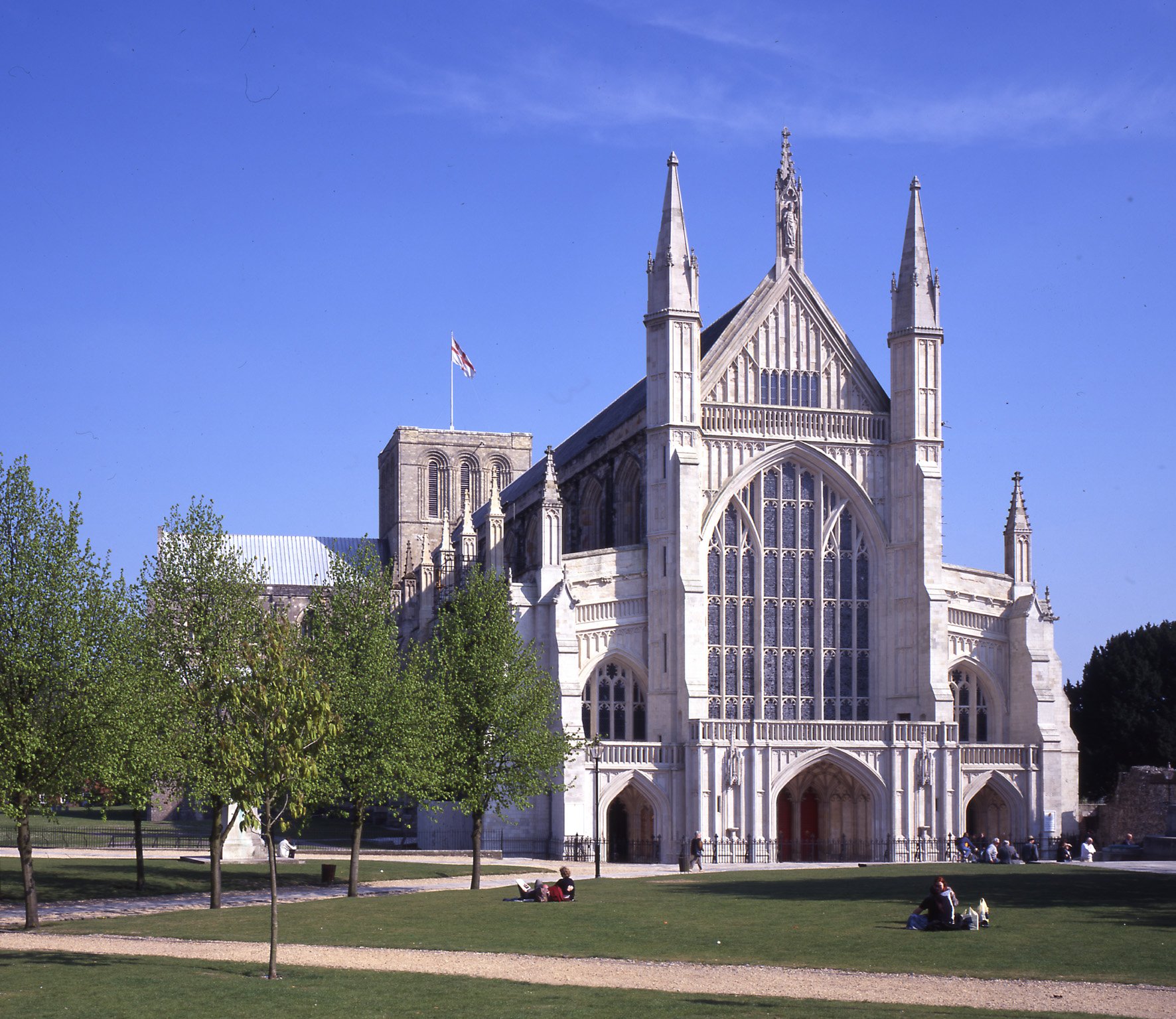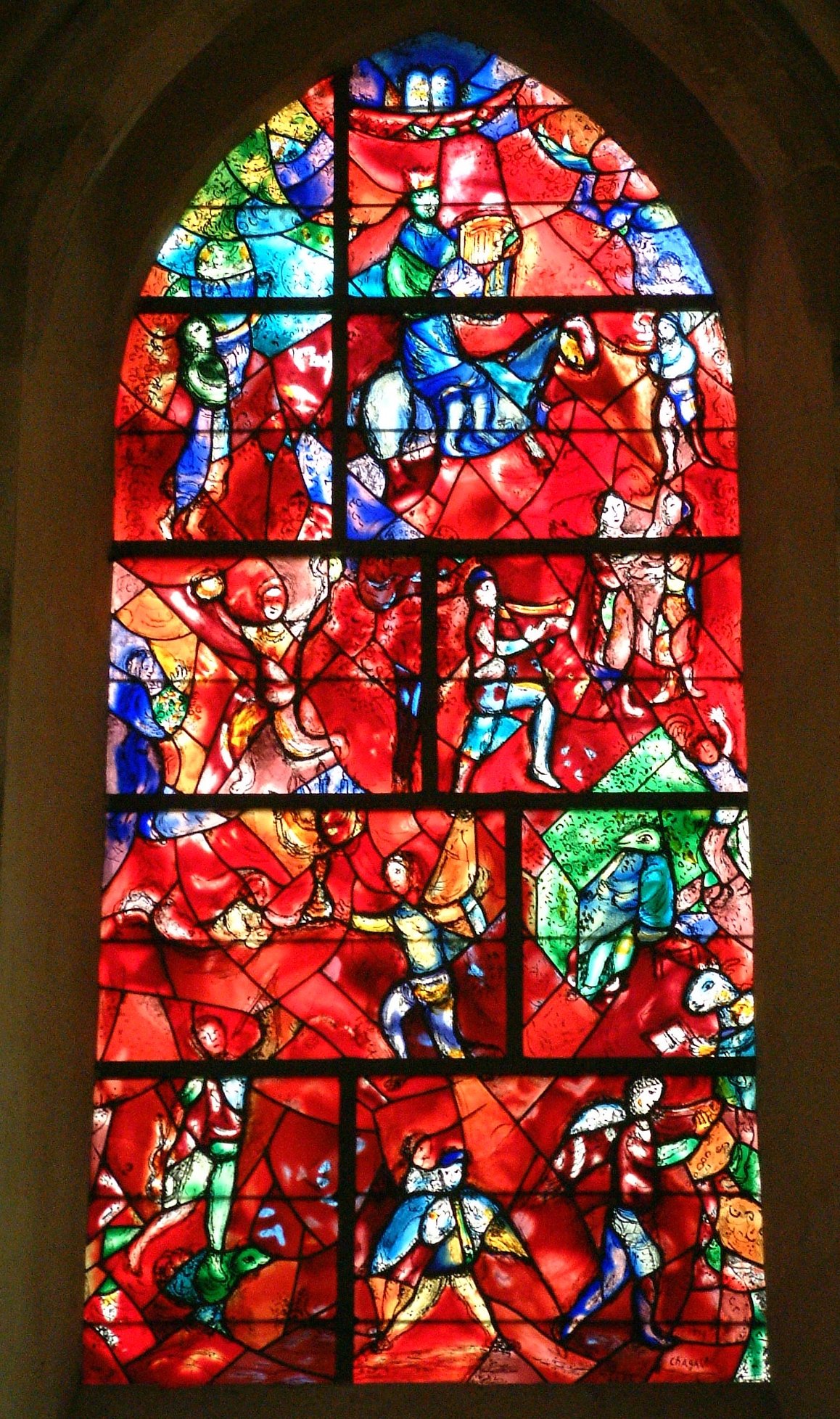Marc Chagall: Let everything that hath breath praise the Lord

Title: Let everything that hath breath praise the Lord
Artist: Marc Chagall (1887–1985, Belorussian-French)
Location: Chichester Cathedral (C of E)
Date: 1978
The strong colours and unusual imagery of this window are a celebratory representation of Psalm 150: ‘O praise God in his holiness… let everything that hath breath praise the Lord’. Figurative elements are shown singing, dancing and playing the musical instruments from the psalm, which is sometimes known as ‘the Musicians psalm’. At the top of the window, King David, the author of the psalm and ruler over Judea and Israel, is shown wearing a crown.
[text above taken from Chichester Cathedral’s website]
Russian-born in modern day Belarus, Marc Chagall was a pioneer of modernism and is considered to be one of the greatest figurative artists of the 20th century. Over the course of a long career Chagall’s unique personal style was informed by his experience and memories of Eastern European Jewish folk culture.
During his career Chagall accepted many non-Jewish commissions, including ‘stained glass for the cathedrals of Reims and Metz, a Dag Hammarskjöld memorial at the United Nations, the great ceiling mural in the Paris Opera’ and the ceiling of the Metropolitan Opera House in New York City.
Source: Lewis, Michael J. “Whatever Happened to Marc Chagall?” Commentary, October, 2008.
Further Information
Medium: Stained glass
Size:
Permanent display
See Chagall’s ‘Let everything that hath breath praise the Lord’ on the Ecclesiart map here.
Commissioner: Walter Hussey
Other artworks in churches by Marc Chagall: Windows (1963), All Saints, Tudeley, Kent; windows (1978–85), Church of St Stephen, Mainz, Germany; Prophets, Jacob, Zion, Christ, Law (1970), windows, Fraumünster Abbey, Zurich, Switzerland; Joel, Isaiah, Jeremiah, Daniel, Cherubim, Elijah, The Crucifixion (1964), windows, Union Church of Pocantico Hills, NY, US.
Chagall’s window is based on Psalm 150. You can read more about it on Chichester Cathedral’s website here and here.

